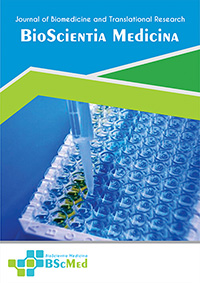Main Article Content
Abstract
Background: Ecthyma contagiosum (Orf) is a zoonotic viral infection caused by a Parapoxvirus, typically presenting as a self-limiting, solitary cutaneous lesion on the hands of occupationally exposed individuals. Atypical, multifocal, or pustular presentations can pose a significant diagnostic challenge, mimicking various inflammatory dermatoses.
Case presentation: We present the case of a 17-year-old female with no direct animal contact who developed a progressive, widespread, and painful pustular eruption on her extremities over three weeks. The clinical presentation was highly suggestive of Subcorneal Pustular Dermatosis (SPD), prompting treatment with systemic corticosteroids, which led to clinical worsening. A delayed epidemiological history revealed an environmental link to a nearby goat farm and a family cluster of similar, milder lesions. A diagnostic punch biopsy was pivotal, revealing viral cytopathic effects, including extensive ballooning degeneration and epidermal necrosis, inconsistent with SPD. Subsequent bacterial culture confirmed superinfection with Enterobacter cloacae ssp. cloacae. The diagnosis was established by the pathognomonic histopathological findings.
Conclusion: The patient’s steroid therapy was immediately ceased, and targeted antibiotic therapy was initiated, leading to complete resolution. This case highlights the Orf virus as a critical clinical chameleon and a diagnostic pitfall for generalized pustular eruptions. It underscores the necessity of a high index of suspicion for zoonoses, even in non-occupational settings, and confirms the indispensable role of histopathology in differentiating viral cytopathy from sterile neutrophilic dermatoses to prevent iatrogenic harm from inappropriate immunosuppression.
Keywords
Article Details
As our aim is to disseminate original research article, hence the publishing right is a necessary one. The publishing right is needed in order to reach the agreement between the author and publisher. As the journal is fully open access, the authors will sign an exclusive license agreement.
The authors have the right to:
- Share their article in the same ways permitted to third parties under the relevant user license.
- Retain copyright, patent, trademark and other intellectual property rights including research data.
- Proper attribution and credit for the published work.
For the open access article, the publisher is granted to the following right.
- The non-exclusive right to publish the article and grant right to others.
- For the published article, the publisher applied for the Creative Commons Attribution-NonCommercial-ShareAlike 4.0 International License.





